Cavatelli with Pork Ragù
By Lee Jackson ↣ Published on: December 4, 2020
An amazing pork ragù recipe features hunks of soft pork alongside sweet Italian sausage. A hearty, tangy sauce coats the soft homespun ridged Cavatelli pasta. A wonderful dish year-round, but especially when it’s chilly outside! A winter warmer in every sense.
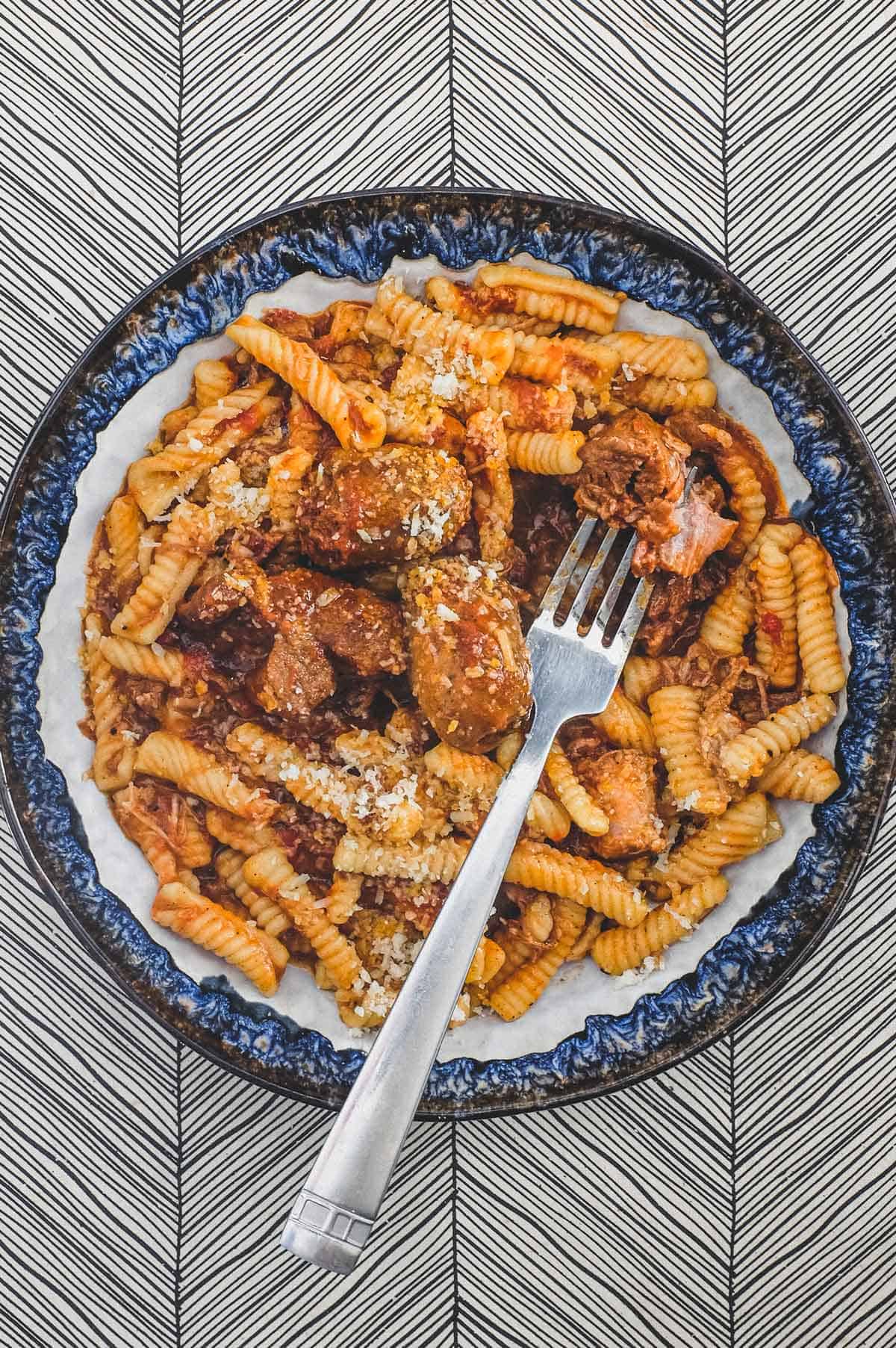
There are few things in life more satisfying than a delicious bowl of hearty pasta with ragù. In the colder months, it's a given that most weeks, I'll have some kind of ragù on the stove, gently bubbling away, filling the house with warmth and fragrance along the way. I have many options for the perfect ragù (each claimed to be my favourite) but this one IS rather special! My Cavatelli with Pork Ragù is a generous, rich and meaty sauce to accompany a wonderful fresh hand-shaped pasta, called cavatelli.
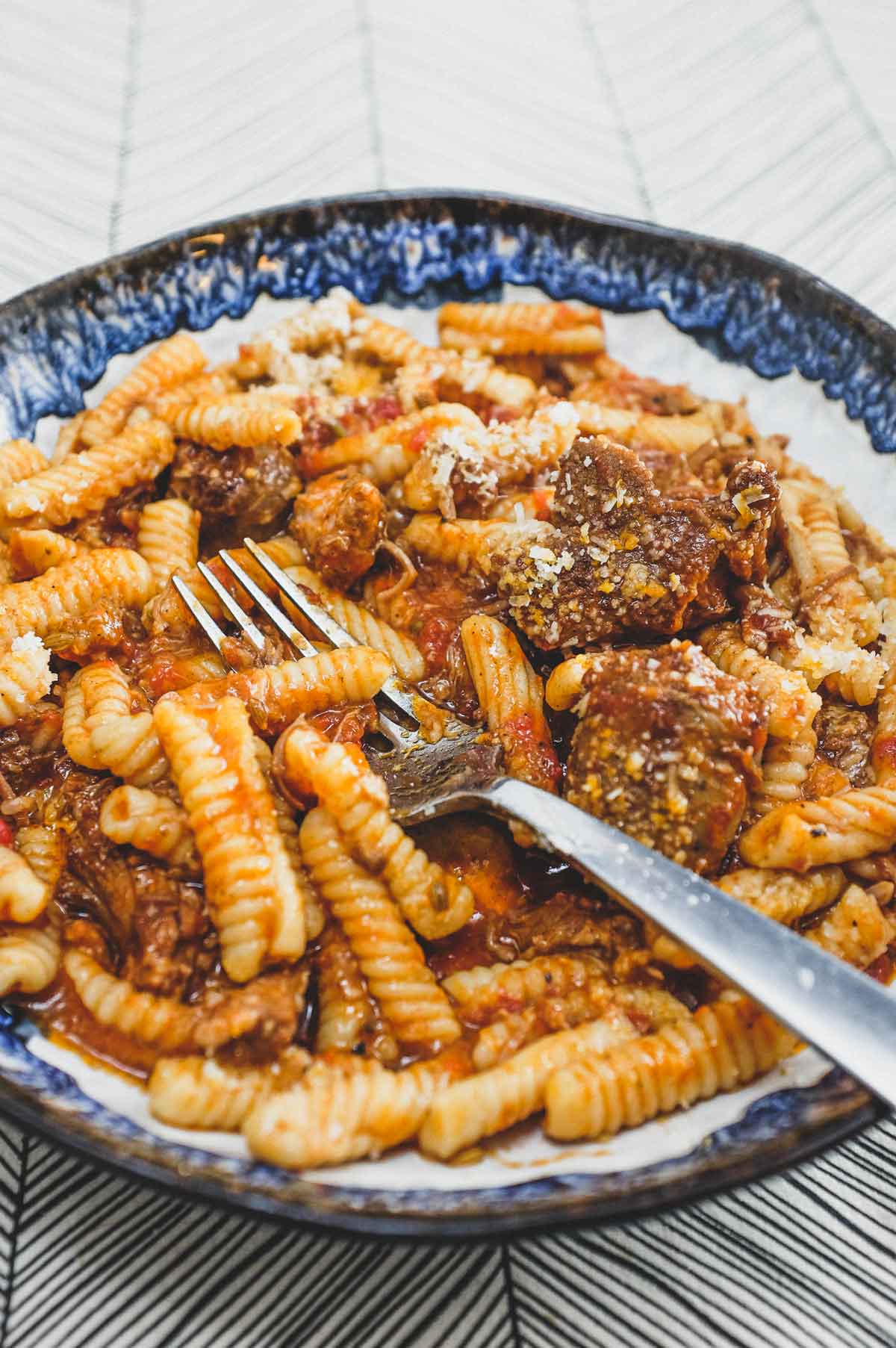
What is Cavatelli?
Cavatelli are a shaped pasta made typically from eggless wheat pasta. Durum wheat flour or Semola Flour is used with water to create a soft dough and then shaped into a kind of hollow shell. Cavatelli comes in a variety of shapes and sizes - some ridged, like in my recipe, some not. Some long and thin, some fat and squat, some large, some tiny. The premise is the same, they are vessels to capture and hold the sauce.
You can buy dried, ready to cook cavatelli, which is perfectly fine, but make mine at home as they're so simple and great therapy after a long day of work. Read on for a quick guide to shaping cavatelli.
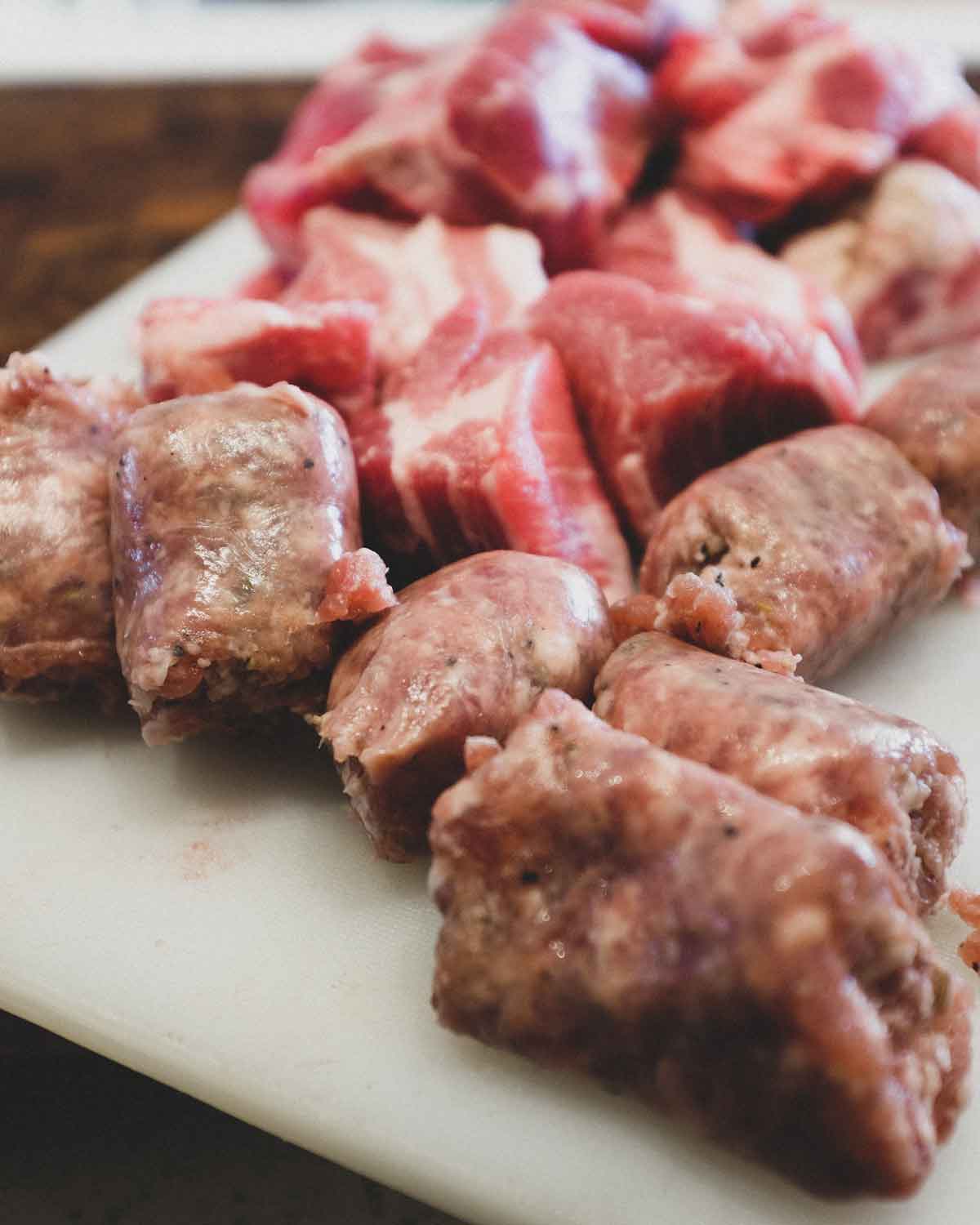
Why it works?
It's SO comforting! I can't even begin to tell you how hearty and filling this ragu feels. It's so intensely flavourful and satisfying. Meaty, rich and packed full of tangy, savoury flavour. It's a warm hug that turns into a bear hug!
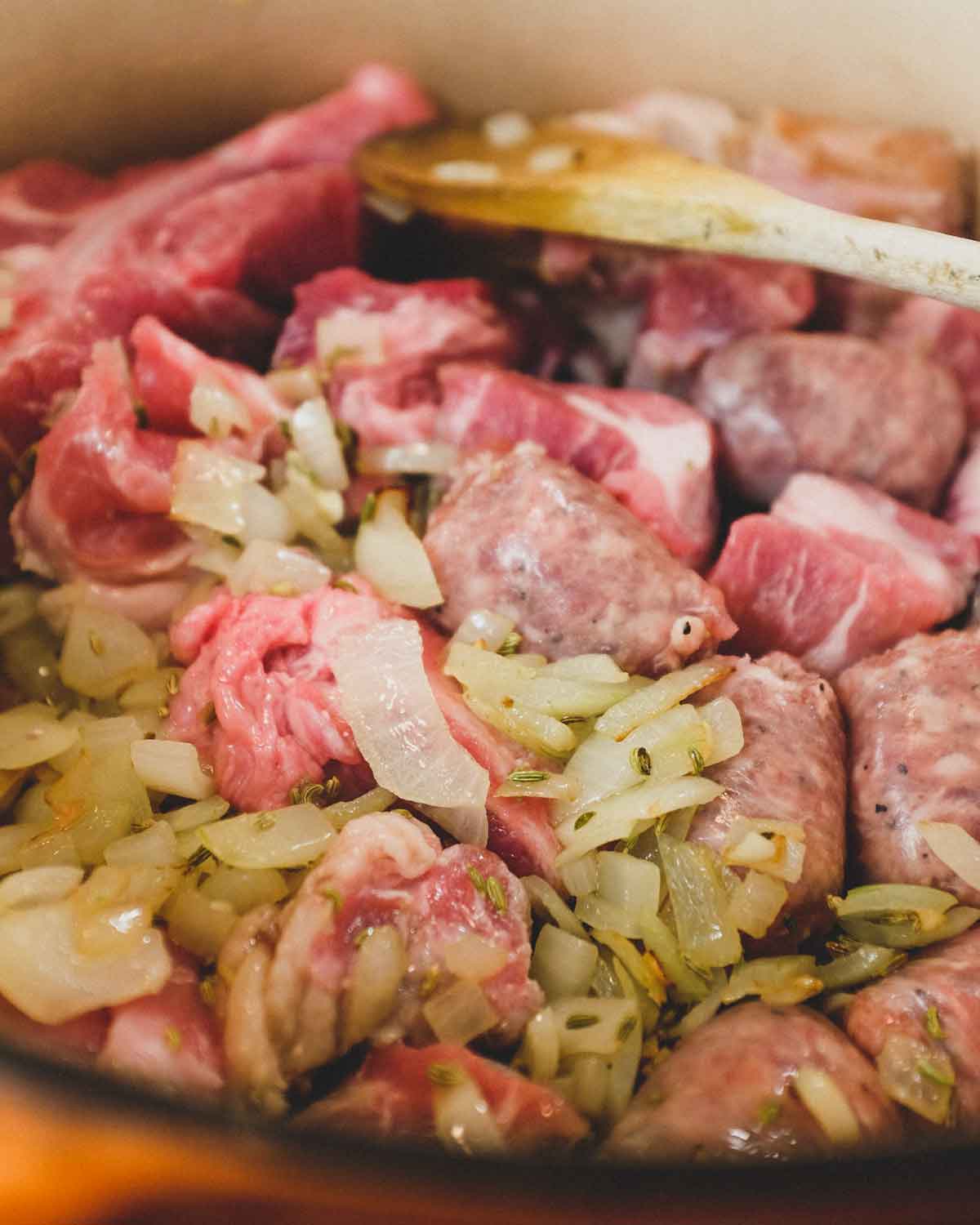
First things first! Let's get the ragù started. This sauce is made from pork, two types to be exact. First a nice meaty, but juicy cut from the shoulder. A little fat is a great idea when cooking low and slow, as it will keep the meat from drying out - there's nothing worse than dry pork - stringy and tough. Shoulder is the perfect cut, and cheap too! The second pork ingredient comes in the form of sweet Italian sausage. Try and get hold of some good quality ones as they'll have a lot of great flavour already - poised to infuse the sauce!
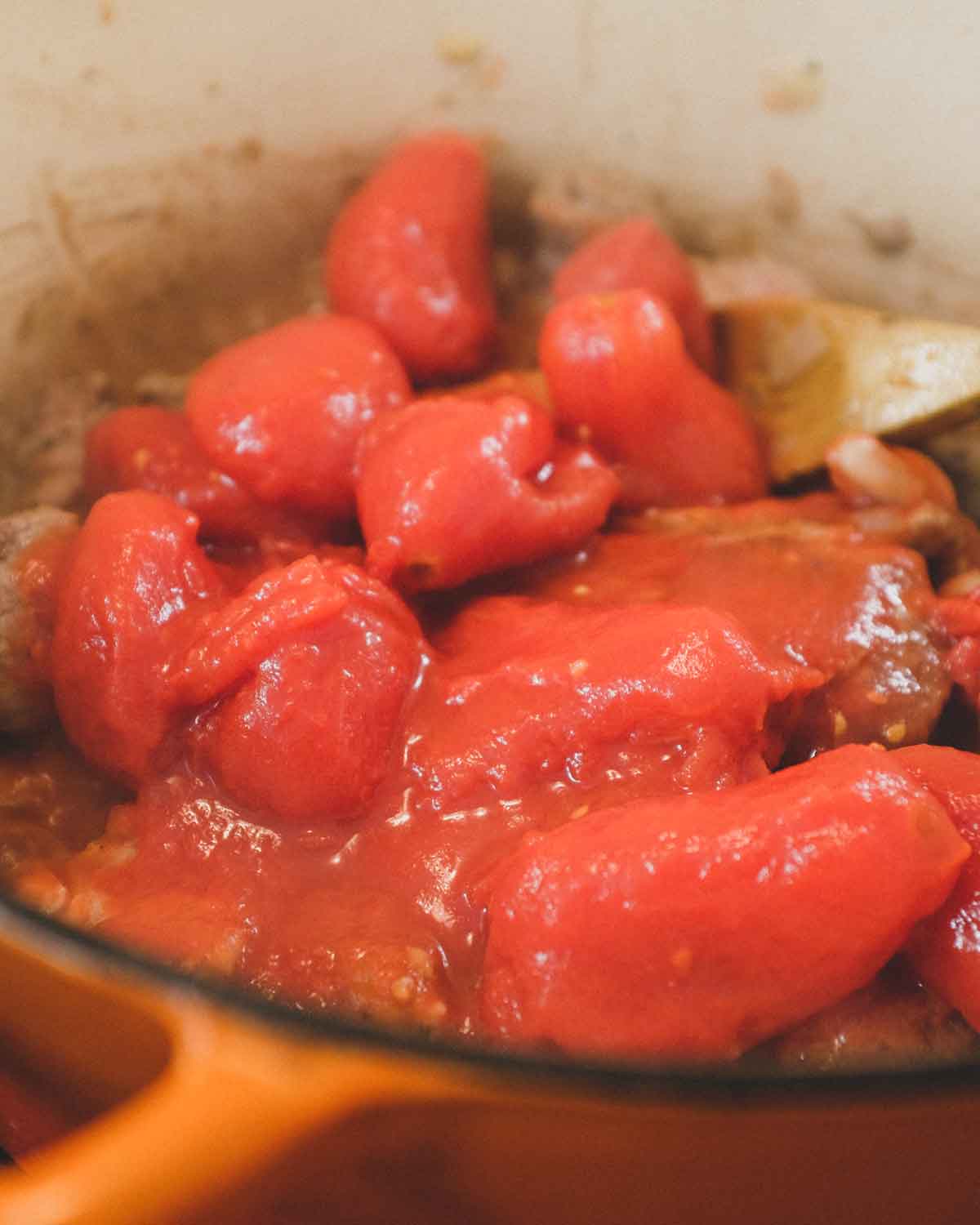
Next up is an important ingredient and one that so many people don't take seriously enough! Good quality tomatoes are essential. For this recipe I like to use whole San Marzano Italian tomatoes - It's really worth the money to buy the best you can - cheaper tomatoes I've found can be very acidic and often have a metallic taste that can make its way into the finished ragù. My go-to (easy to find) tomato brands are Cento, Strianese or Mutti.
Once they go into the pan, I'll break them up a bit with my spoon and then add a bit of water or stock to simmer.
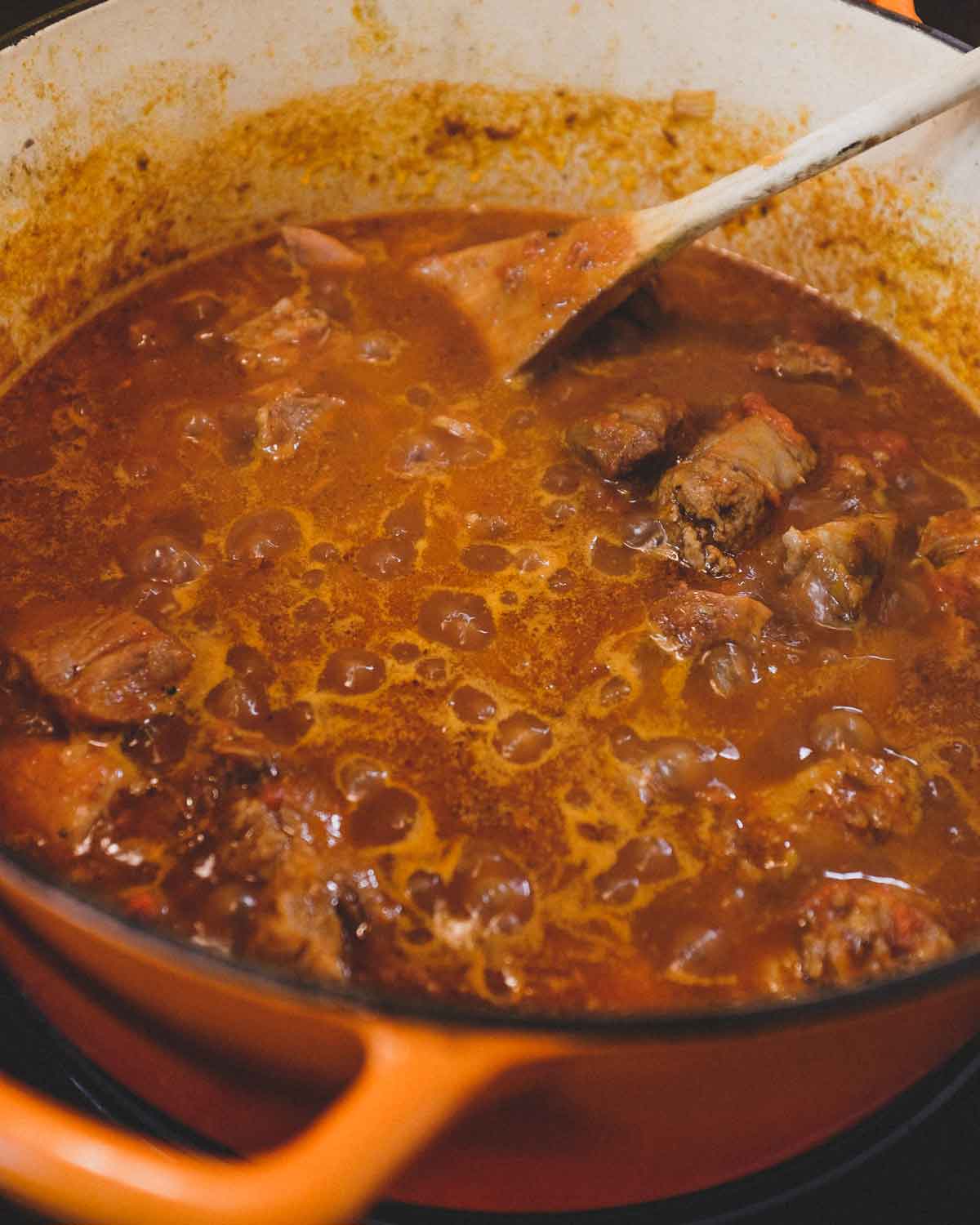
What makes a good ragu? In short, other than good ingredients, the answer is TIME! A slow-cooked pork ragù sauce is essential. You can cook this in the instant pot, I'm sure - but I must say, that I CAN tell the difference to a dish cooked low and slow. There's a better texture to everything! The sauce is more complex, the meat is tender but full of flavour and the sausage takes on an amazingly soft texture that doesn't happen cooked under pressure. If time is short, then perhaps this isn't the dish for you on this occasion.
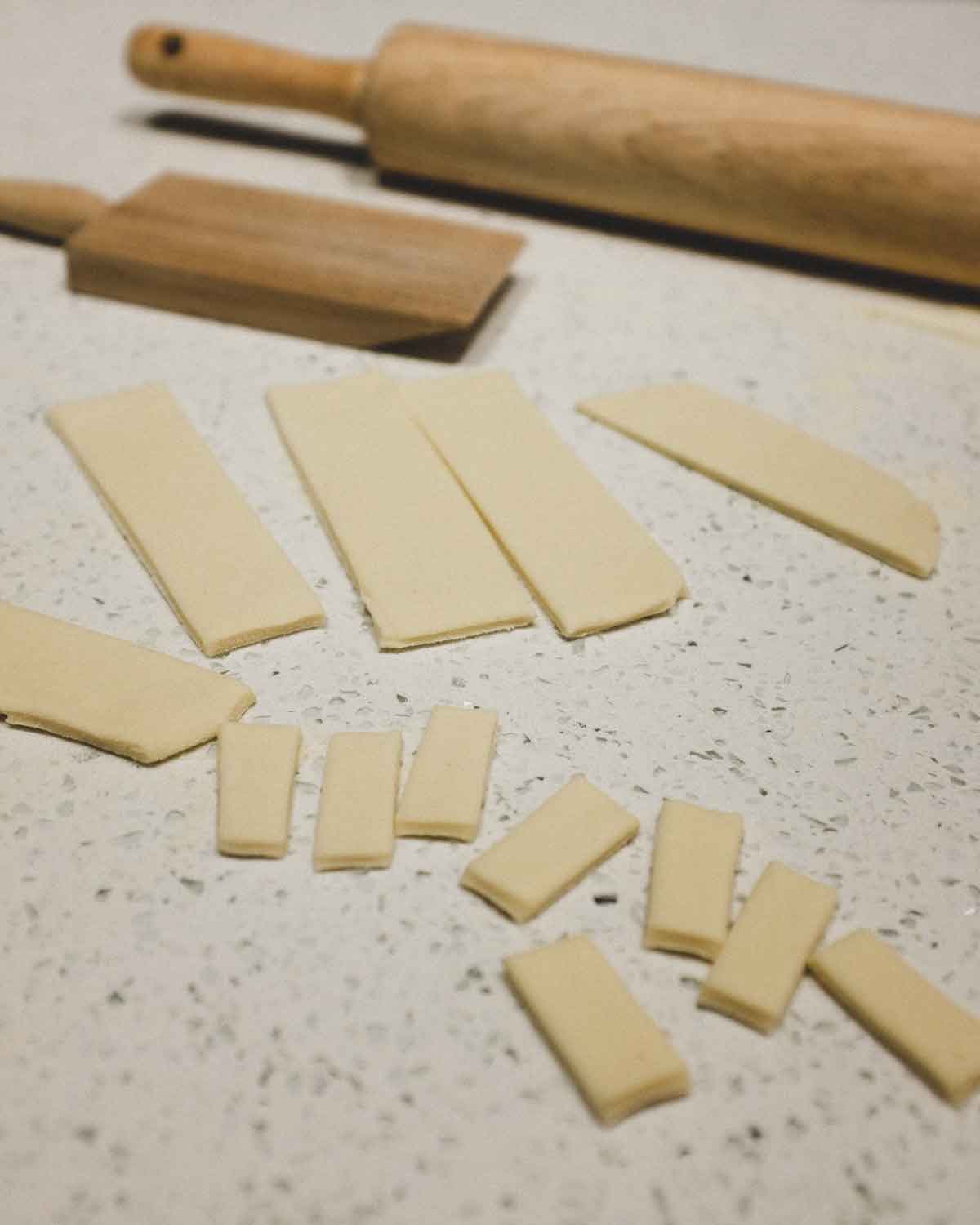
How to roll homemade Cavatelli pasta
Now that the ragù is underway, you can turn your attention to the pasta. If you choose to make your own, then you only need one ingredient - Semola flour. This is an eggless pasta, so all we need is a little water to create a dough with the flour. Knead for 10-15 minutes, then rest for 20-30 minutes.
To shape the pasta, I take about 1/4 of the dough and using a rolling pin (or matarello, if you have one - I don't) and roll into a kind of oblong shape. I also make it quite thick, around 3mm. I cut the oblong into long strips that are around 2 fingers wide. Then I cut the strips into smaller oblong pieces about 10mm wide.
Are you keeping up?
- Roll the dough into a large oblong (about 3mm thick)
- Cut that oblong into strips (about 2 finger widths)
- Cut those strips into small pieces (about 10mm wide)
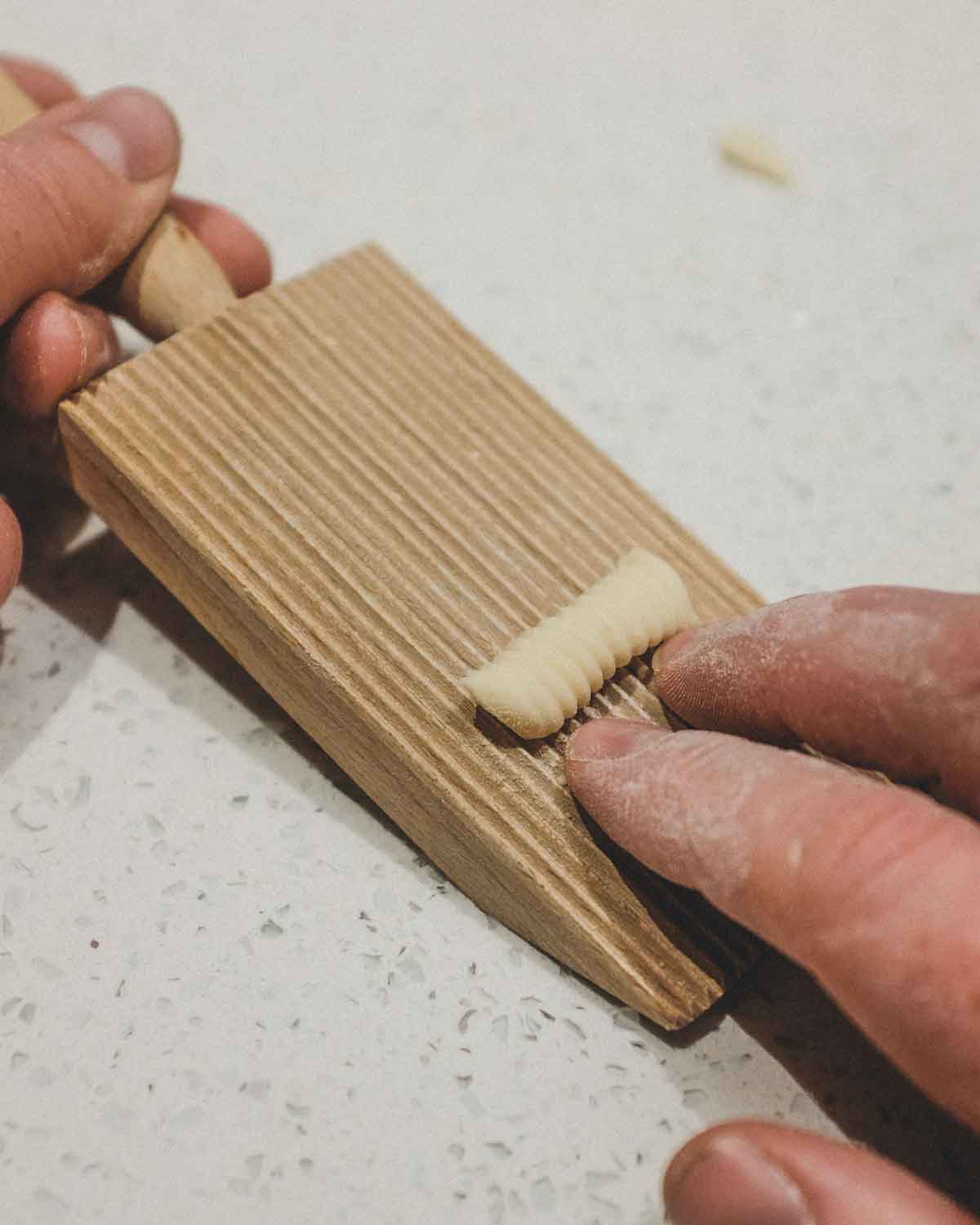
Now, to shape the cavatelli we'll use a gnocchi board or something with a ridged surface (you can also create these without ridges by simply following the same principle on a flat surface).
To create the shape, take one of the pieces and put two fingers on top. Using a push and drag technique, gently push down on the shape while moving your fingers downwards, towards yourself. The pasta will naturally curl as it goes which will create a little well, perfect for the sauce. The ridges of the gnocchi board also create the perfect traps of more sauce, making this shape ideal for rich, tomato sauce.
Now comes the therapy! Repeat this process with all the dough - lose yourself for a while - take a seat and enjoy!
Once you've shaped all the cavatelli pasta, douse generously in more flour to help avoid sticking and cover with a clean towel. You can leave for 3-4 hours somewhere cool and dry no problem. If your kitchen is hot and humid, take them somewhere else if you're not eating them right away.
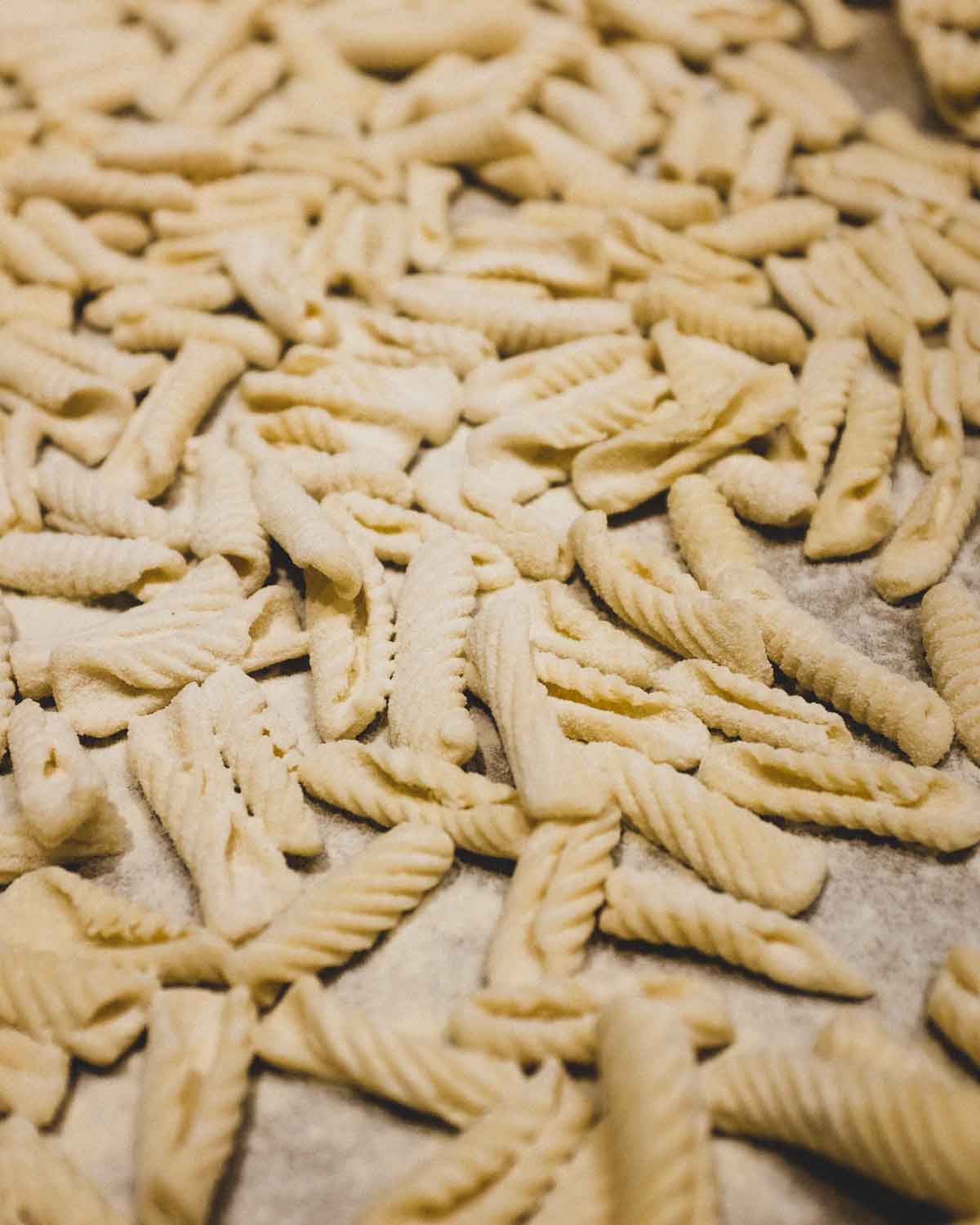
Once you're ready to eat, it's a 2-3 minute cook in boiling salted water for the cavatelli and then they're mixed with the ragù sauce. Typically, at this stage, the meat would be separated from the sauce and served separately. That said, In Italy at one triumphant Agroturismo restaurant in Abruzzo, we were served in the style I use here – the pasta was mixed with the sauce, and a few chunks of meat and sausage were placed on top to make for a more substantial plate of food.
Ready to get cooking?
In essence, this is Italy on a plate. Few ingredients, combined into a heady, flavourful dish that will warm the coldest of hearts. Hope you enjoy!
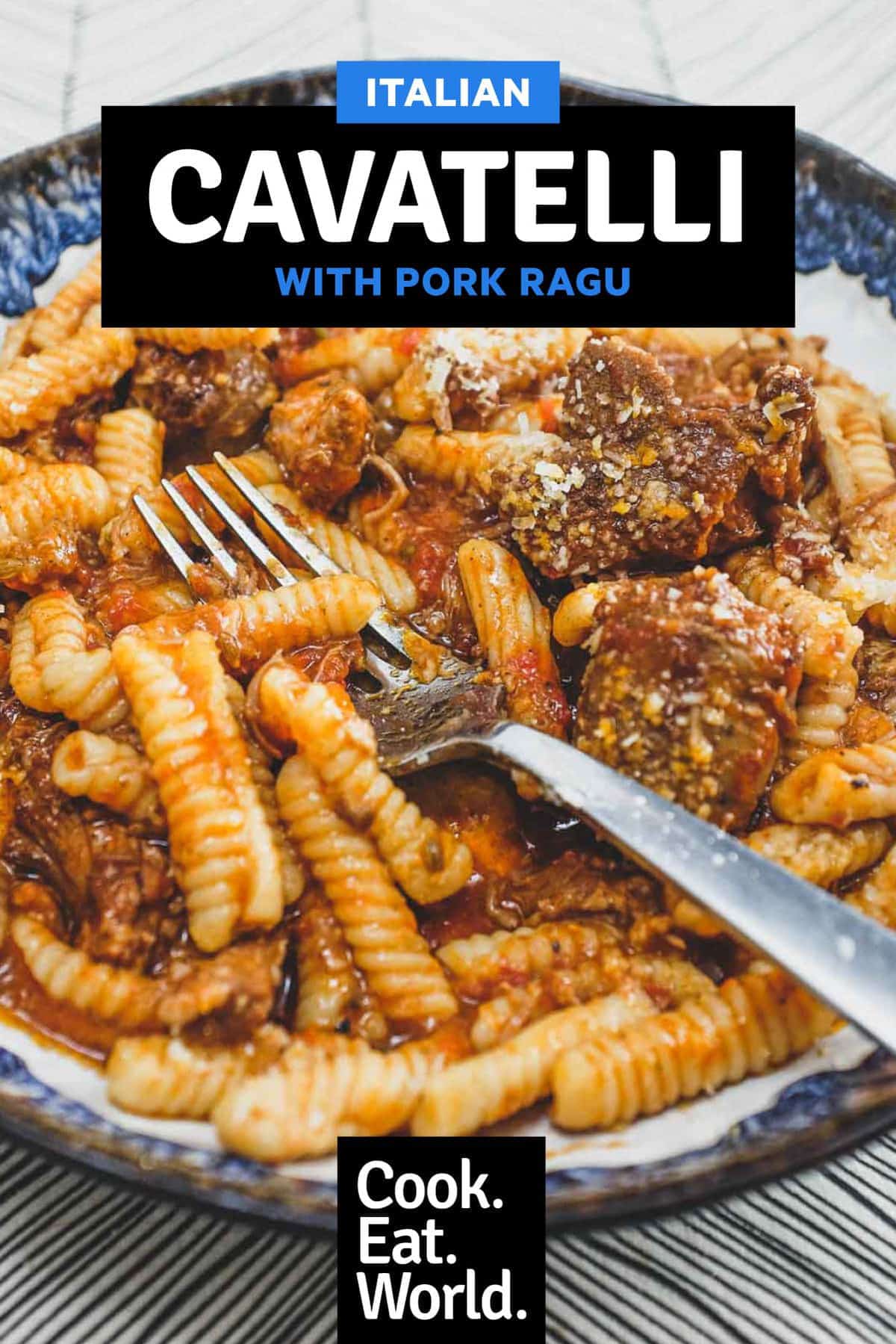
More delicious Italian recipes
If you like this ragù, then you must try one, or all of these delicious Italian recipes too.
- Pinsa Romana
- Italian Sausage & Lentils
- Gramigna Pasta with Sausage
- Peposo Alla Fornacina (Tuscan Beef & Black Pepper Stew)
- Garganelli Pasta with Mushroom Sauce
- Lamb Ragu with Pappardelle
- Osso Buco Ravioli
- Malloreddus (Gnocchetti Sardi) with Sausage & Arugula
- Pasta with Pistachio Pesto
- Nduja Risotto
- Italian Porchetta
- Tuscan Beans with Pancetta & Cavolo Nero
Any Questions? (FAQ)
Have a question about Cavatelli? Let me know in the comments.
What are cavatelli?
Cavatelli are small pasta shells originating from Southern Italy. Made from flour and water, they're typically shaped like small hot dog buns with ridges, perfect for holding sauce. Cavatelli can be served with various sauces like tomato, pesto, or creamy cheese. Their chewy texture and ability to capture sauce make them a delightful choice in Italian cuisine.
What is ragu?
Ragù is a rich Italian meat-based sauce, typically made with minced or ground meat (such as beef, pork, veal, or lamb), cooked with vegetables, tomatoes, and seasonings like herbs or spices. It's a staple in Italian cuisine, often served with pasta like spaghetti or tagliatelle. Ragù is simmered slowly to develop deep flavours, resulting in a hearty and satisfying sauce.
This recipe uses affiliations and may receive a commission based on your activity (link clicks). Learn more.
Ingredients
- 1.9 lb Pork shoulder (900g)(cut into large chunks)
- 2 Italian sausage (each cut into 4 pieces)
- 1 onion (peeled and chopped)
- 3 garlic cloves (peeled and chopped)
- 1 tsp fennel seeds
- 1 cup white wine (dry)
- ¼ tsp ground clove
- ½ tsp allspice
- ½ tsp black pepper
- ¼ tsp nutmeg
- 1 tsp salt
- 1 tsp sugar
- 1 24 oz can of whole San Marzano tomatoes
For the pasta
- 3 cups semola flour
- water
Instructions
- In a large pan heat the oil over a moderate heat until hot. Add the onion, garlic and fennel seeds and fry for 2-3 minutes until soft. Push the onions to the edge of the pan and add the pork and sausage and cook to brown on all sides (about 4-5 minutes). Mix into the onion and then pour in the wine.Let this sizzle for about 1-2 minutes to burn off the alcohol.
- Add the clove, black pepper, allspice, nutmeg, salt and sugar and stir well.
- Add the tomatoes then, using a wooden spoon, break up each tomato a little. Add the about ¾ tomato can of water and stir well.
- Let this come to a boil then reduce the heat to low and let this very gently simmer (lid on) for 2 1/2 hours. Remove the lid and cook for a further 30 minutes to reduce the sauce a little.
To make the pasta
- Tip the flour into a large bowl or onto a work surface. Make a well in the centre and pour in water (about 3/4 cup to start). Begin to mix the water with your fingers, bringing in flour as you go until all combined. Continue adding a little water at a time until the dough comes together without being too wet.Knead the dough for 10-15 minutes. You'll notice it becomes pliable and smooth. After kneading, wrap in plastic wrap and cover with an upturned bowl. Leave to rest for 20-30 minutes.
- When rested, cut a portion of pasta dough (about 1/4) and using a rolling pin, roll out into a 3mm thick oblong/rectangular shape.Cut this oblong into strips about 2 finger-widths in size.Now cut these strips into smaller rectangular pieces, around 10mm in size.
- Using a gnocchi board, or if you don't have one you can create the cavatelli as non-ridged on a flat surface, take one piece and place on the board. Place two fingers (index and middle finger) on top of the pasta piece, gently press down and drag the pasta towards yourself. The shape will curl, creating the cavatelli.Repeat this process with all the remaining pasta.Place the pasta on a large floured sheet pan and sprinkle with more semola flour to help avoid sticking. Cover with a clean towel and set aside for up to 4 hours somewhere cool and dry.
Arranging the dish
- When ready, cook the cavatelli in a large pan of salted water for 2-3 minutes. They should all float to the top. Drain, retaining a little pasta water.Return the pasta to the pan and spoon in some of the sauce to generously coat, add a little of the pasta water to loosen the sauce a bit.Arrange in bowls and then top with some of the meat and sausage. Sprinkle with some Parmigiano Reggiano and you're done!
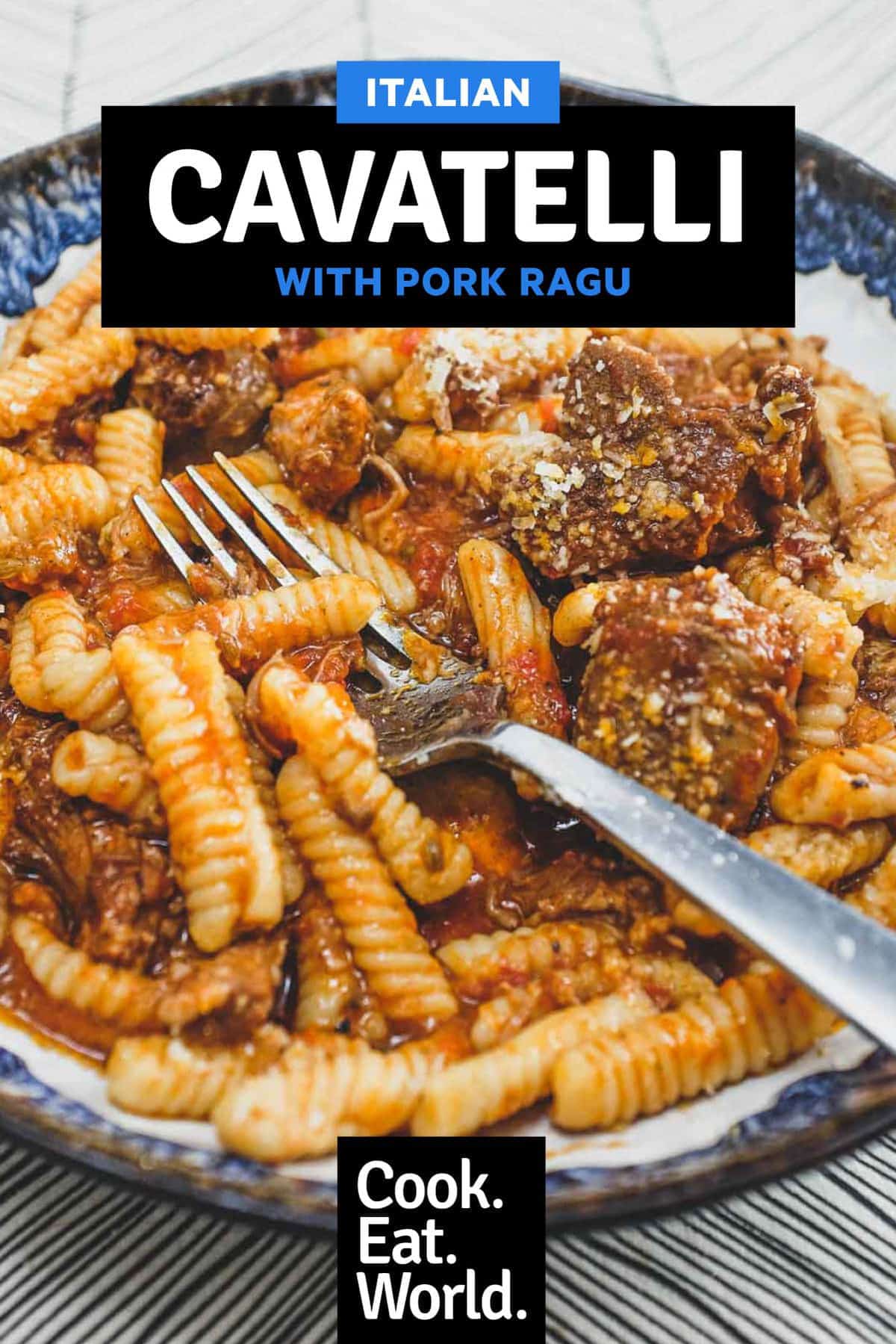
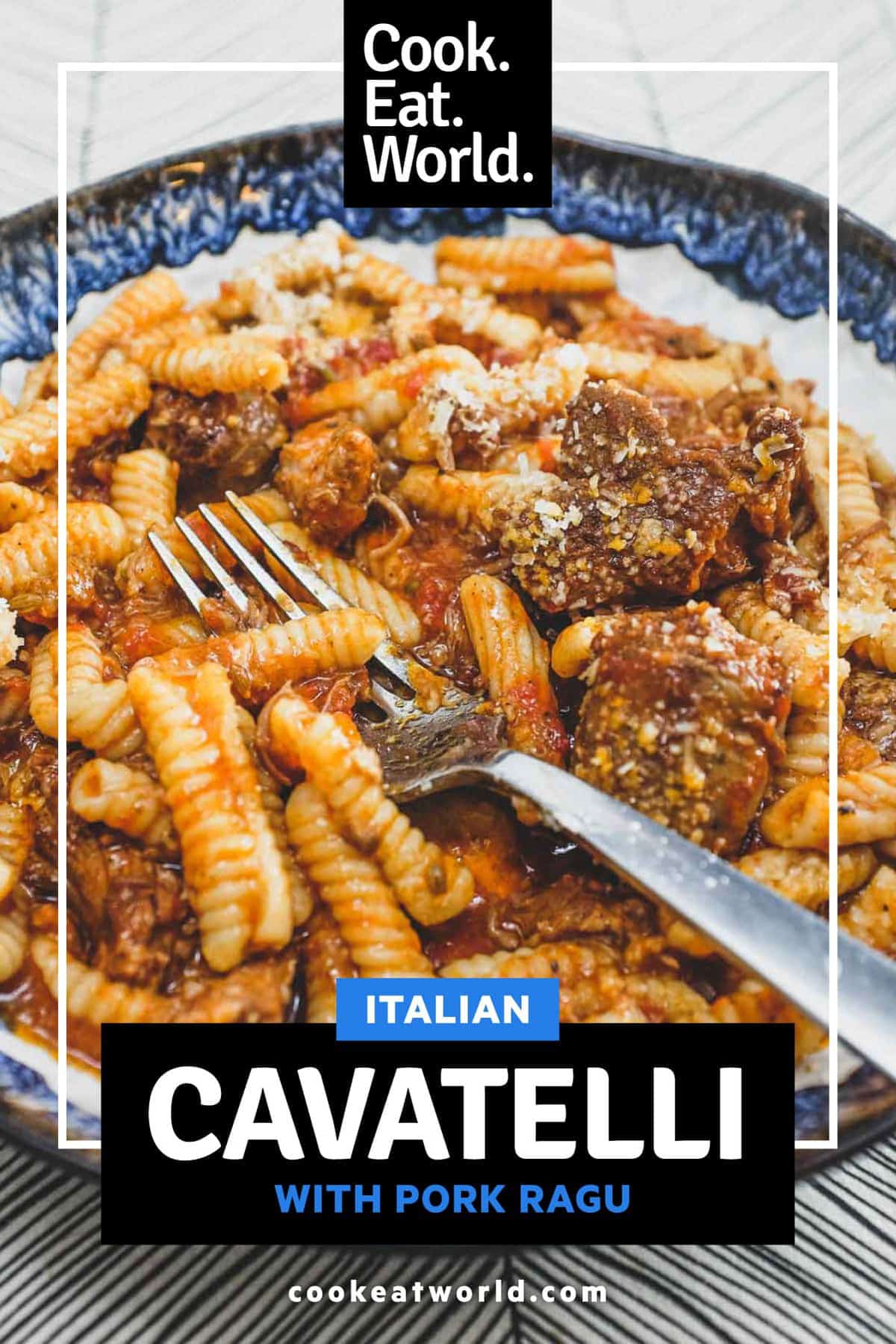
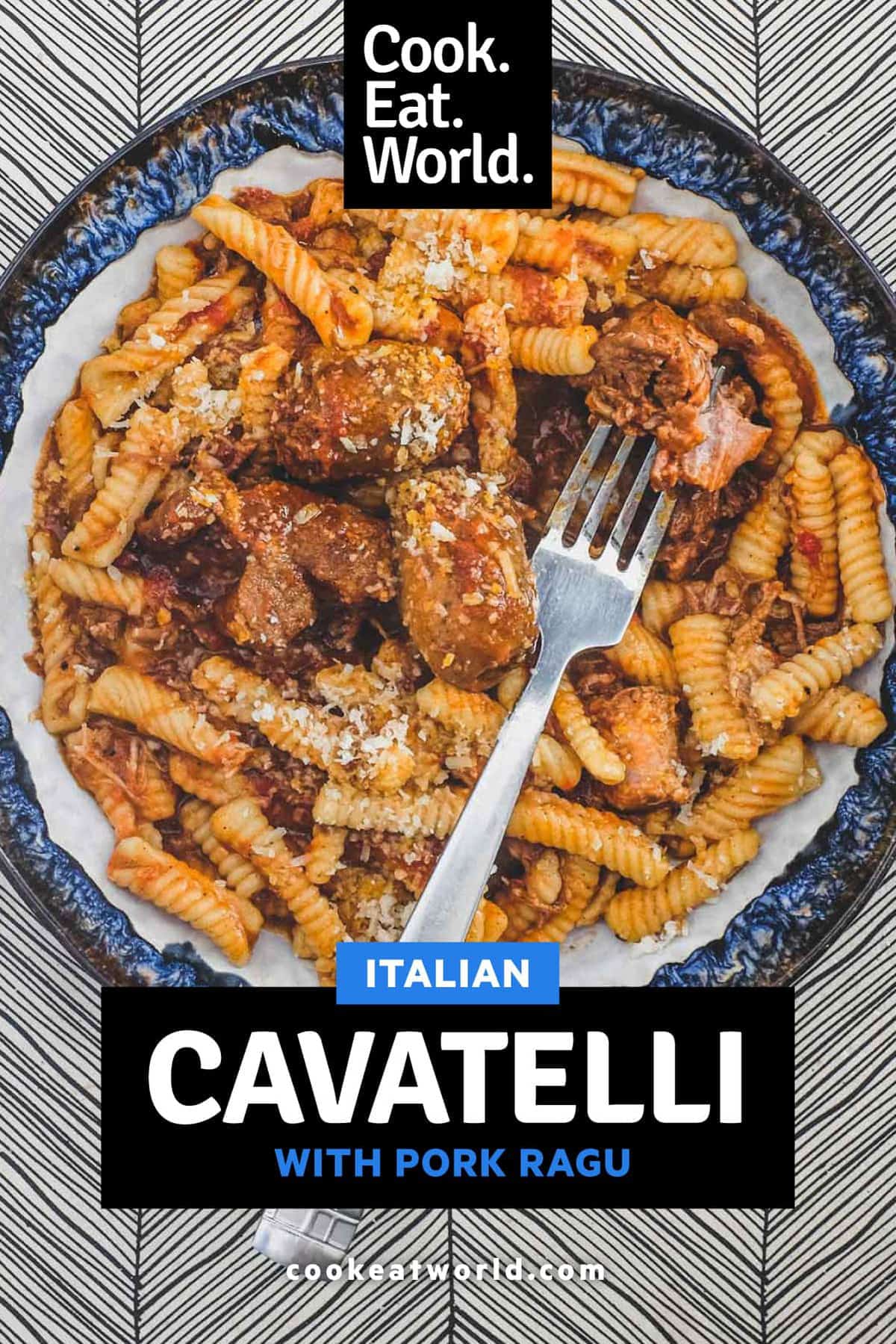
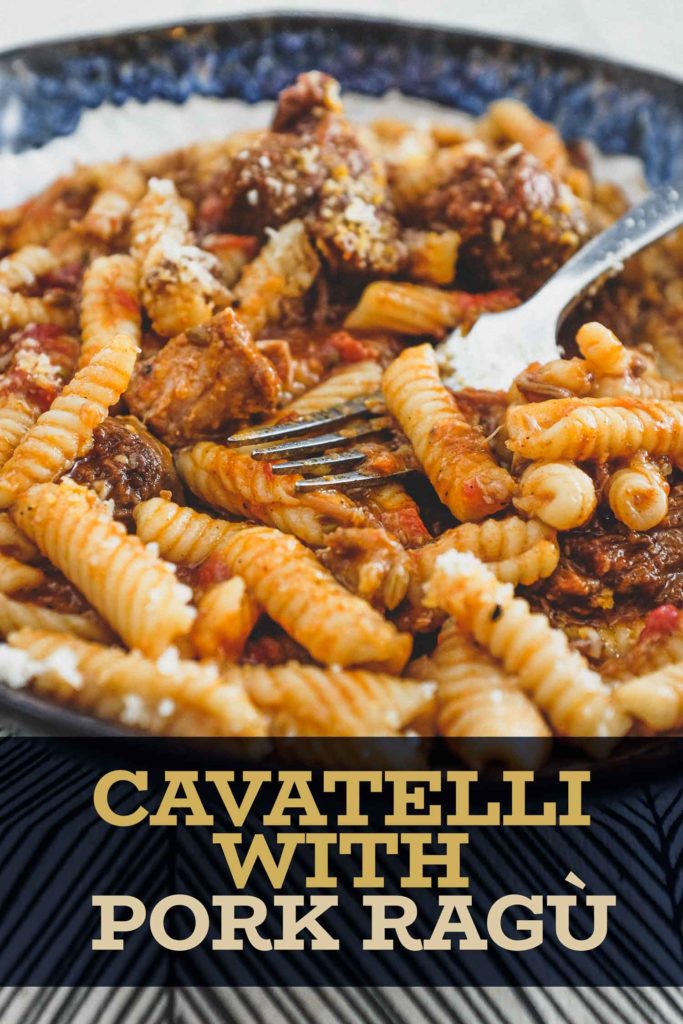
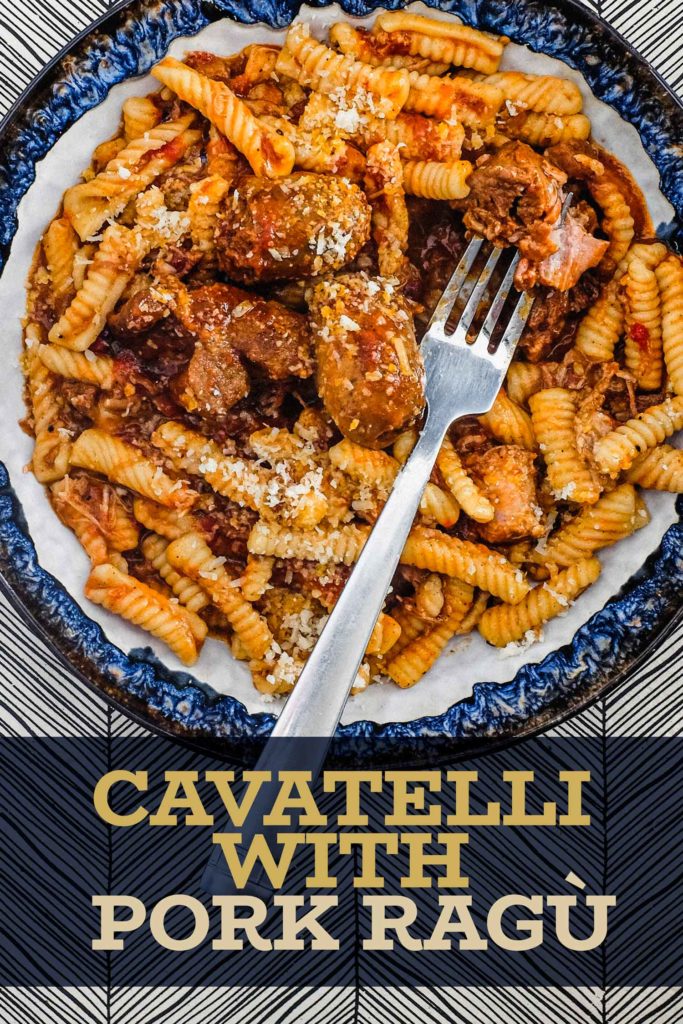
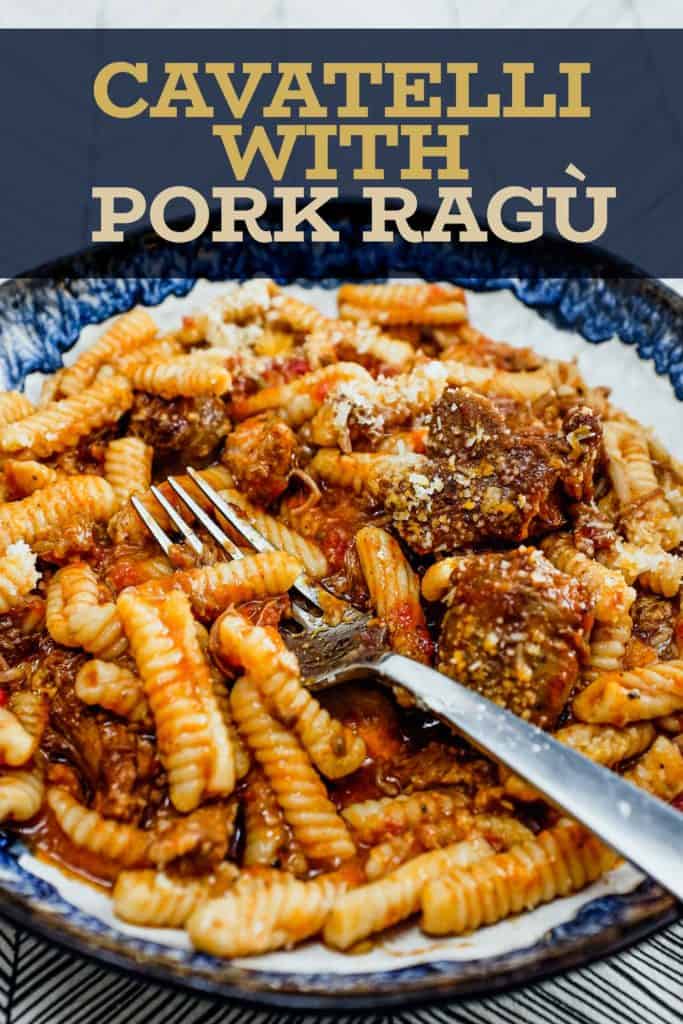

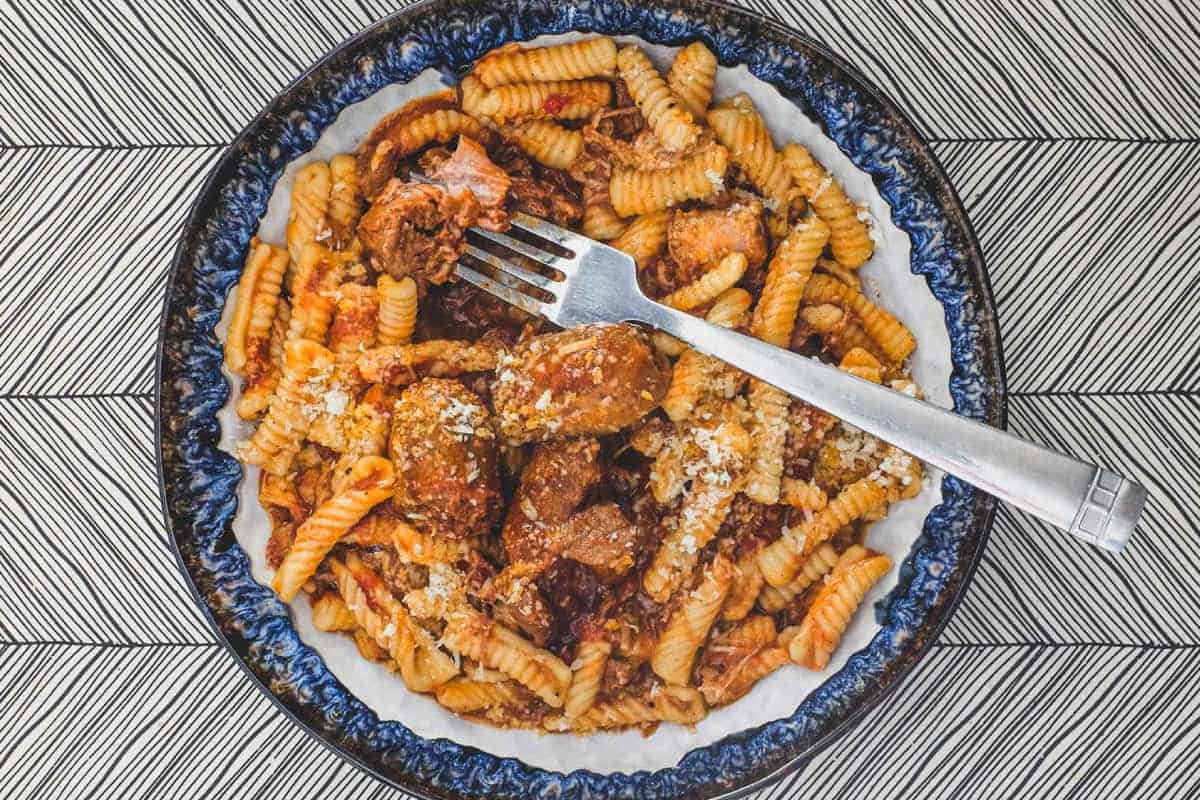
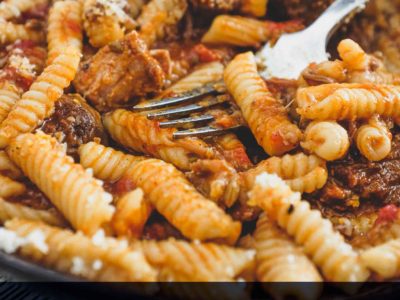
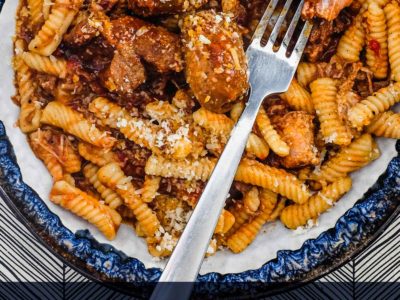
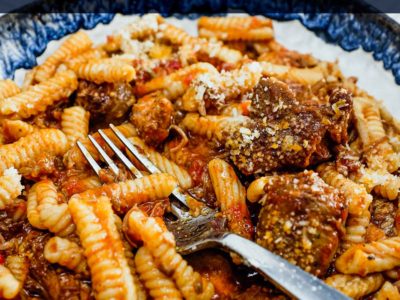
Leave A Comment